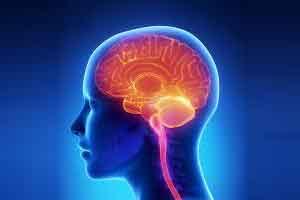- Home
- Editorial
- News
- Practice Guidelines
- Anesthesiology Guidelines
- Cancer Guidelines
- Cardiac Sciences Guidelines
- Critical Care Guidelines
- Dentistry Guidelines
- Dermatology Guidelines
- Diabetes and Endo Guidelines
- Diagnostics Guidelines
- ENT Guidelines
- Featured Practice Guidelines
- Gastroenterology Guidelines
- Geriatrics Guidelines
- Medicine Guidelines
- Nephrology Guidelines
- Neurosciences Guidelines
- Obs and Gynae Guidelines
- Ophthalmology Guidelines
- Orthopaedics Guidelines
- Paediatrics Guidelines
- Psychiatry Guidelines
- Pulmonology Guidelines
- Radiology Guidelines
- Surgery Guidelines
- Urology Guidelines
Hyper-sensitive brain network cause chronic headaches

A new study has found that brain networks of patients with fibromyalgia primes for rapid and global, responses to minor changes. Fibromyalgia is a disorder characterized by widespread musculoskeletal pain accompanied by memory issues, sleep, fatigue, and memory issues.
It is believed that fibromyalgia amplifies painful sensations by affecting the way your brain processes pain signals. The new research states that hyper-reactive brain networks could play a part in the hypersensitivity of fibromyalgia.
This abnormal hyper-sensitivity of brain networks, called Explosive Synchronization (ES), can be observed in other network phenomena as well across nature. The research details only the second study about ES in the human brain.
Main researchers from the University of Michigan and Pohang University of Science and Technology in South Korea report evidence of ES in the brains of people with fibromyalgia, a condition characterized by widespread chronic pain.
Richard Harris, associate professor of anesthesiology at Michigan Medicine with the Chronic Pain and Fatigue Research Center was the senior co-author of the study.
He said, "For the first time, this research shows that the hypersensitivity experienced by chronic pain patients may result from hypersensitive brain networks. The subjects had conditions similar to other networks that undergo explosive synchronisation".
It was found that in ES, a small stimulus can lead to a dramatic synchronised reaction in the network, as can happen with a power grid failure (that rapidly turns things off) or a seizure (that rapidly turns things on). Until recently, this phenomenon was studied in physics rather than coming in focus in medicine.
Researchers claimed it as a promising avenue to explore in the continued quest to determine how fibromyalgia is developed in a person.
UnCheol Lee, a physicist and assistant professor of anesthesiology at Michigan Medicine, the first author of research paper said, "As opposed to the normal process of gradually linking up different centers in the brain after a stimulus, chronic pain patients have conditions that predispose them to link up in an abrupt, explosive manner". He added that these conditions were similar to other networks that undergo ES, including power grids."
The research was conducted on ten female participants with fibromyalgia. They recorded electrical activities in the brains which showed baseline EEG results indicating hyper-active and unstable brain networks, Harris added.
Notably, there was a strong correlation between the degree of ES conditions and the self-reported intensity of chronic pain reported by the patients at the time of EEG testing. Computer models were then used to monitor brain activity to compare stimulus responses of fibromyalgia patients to the normal condition. As expected, the fibromyalgia model was more sensitive to electrical stimulation than the model without ES characteristics, he noted.
"We again see the chronic pain brain is electrically unstable and sensitive". He added that this type of modeling could help guide future treatments for fibromyalgia."
Since ES can be modeled essentially outside of the brain or in a computer, researchers could exhaustively test for influential regions that transform a hypersensitive network into a more stable one. These regions could then be targeted in living humans using noninvasive brain modulation therapies.
The research was published in Scientific Reports.

Disclaimer: This site is primarily intended for healthcare professionals. Any content/information on this website does not replace the advice of medical and/or health professionals and should not be construed as medical/diagnostic advice/endorsement or prescription. Use of this site is subject to our terms of use, privacy policy, advertisement policy. © 2020 Minerva Medical Treatment Pvt Ltd